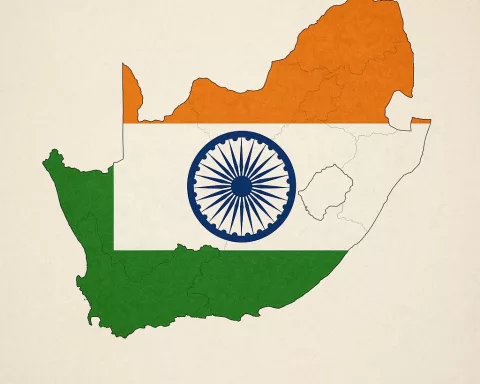The cost of food has been rising steadily over the past few years, with a significant increase in 2023. This surge in food prices has affected personal care items and specific food categories, such as vegetables and meat. The future looks bleak, with concerns over shortages and other factors expected to drive prices even higher. The rising cost of food is a growing challenge for consumers and raises concerns about future affordability.
As prices of goods and services continue to increase, the rise in food prices over the past few years has become more noticeable. While small monthly increments may seem insignificant, when accumulated over time, the reality of expensive food and the struggle of consumers to afford essential groceries becomes apparent.
The Latest Stats on Food Prices
According to the latest consumer price index (CPI) data from Statistics SA, headline inflation was recorded at 0.6% in September 2023, with an overall increase in prices of goods and services by 5.4% over the past year. However, food prices have significantly outpaced the overall inflation rate, with the cost of food and non-alcoholic drinks rising by an alarming 8.1% compared to September 2022.
The Surge in Food Inflation
To gain a clearer understanding of the current dilemma, it’s essential to examine food prices over an extended period. Over the last three years, food inflation has surged from a more manageable 5% to the current 8.1%. This increase comes on top of an 11.9% hike in the year to September 2022 and an 11.4% rise in the year to September 2021. Consequently, food is now nearly 35% more expensive than it was three years ago, with some products increasing by more than 50%.
Personal Care Items Also Affected
Prices of personal care items have followed a similar trajectory, with hair relaxers almost doubling in price and toothpaste now costing 55% more than it did three years ago. Even pet owners are feeling the pinch, with cat food pellets now 63% more expensive than they were just a few years ago.
Specific Food Categories Affected
The latest inflation report reveals sharp price increases in specific food categories over the past year, with vegetables registering a 15.3% surge, while meat prices rose by a more subdued 3.8%. Cooking oil prices experienced a slight decrease after significant previous increases, though it remains 50% more expensive than three years ago.
Future Concerns
Poultry and egg prices are currently on the rise due to concerns over shortages, as producers have begun culling birds in response to the outbreak of avian flu. With the ongoing challenges of fuel price pressures and an undervalued currency, further upward pressure on broader imported inflation is expected.
In summary, food inflation has outpaced general inflation in four of the past five years, with the cost of food items in the inflation basket now 40% more expensive than in 2018. This trend not only highlights the growing challenge consumers face when purchasing essential groceries but also raises concerns about future price increases and their impact on the affordability of food for people worldwide.
1. Why have food prices been rising steadily over the past few years?
There are several factors that have contributed to the steady rise in food prices over the past few years, including shortages, fuel price pressures, and an undervalued currency. These factors have led to increased production costs and supply chain disruptions, which have ultimately driven up the cost of food.
2. What food categories have been most affected by rising prices?
Vegetables and personal care items, such as hair relaxers and toothpaste, have seen significant price increases over the past few years. Meat prices have also risen, although at a more subdued rate. Cooking oil prices have experienced fluctuations, but overall remain 50% more expensive than they were three years ago.
3. How much have food prices increased over the past year?
According to the latest consumer price index (CPI) data from Statistics SA, food prices have increased by an alarming 8.1% compared to September 2022. This is significantly higher than the overall inflation rate, which was recorded at 0.6% in September 2023.
4. What are the concerns about future food prices?
Producers have begun culling birds in response to the outbreak of avian flu, which has led to concerns over shortages and further price increases for poultry and egg products. Additionally, ongoing fuel price pressures and an undervalued currency are expected to continue driving up production costs and supply chain disruptions, which could ultimately lead to even higher food prices.
5. How has the rise in food prices impacted consumers?
The rise in food prices has made it increasingly difficult for consumers to afford essential groceries, particularly for those on lower incomes. Personal care items and pet food have also seen significant price increases, putting further strain on household budgets. The overall trend raises concerns about future affordability and access to food for people worldwide.








